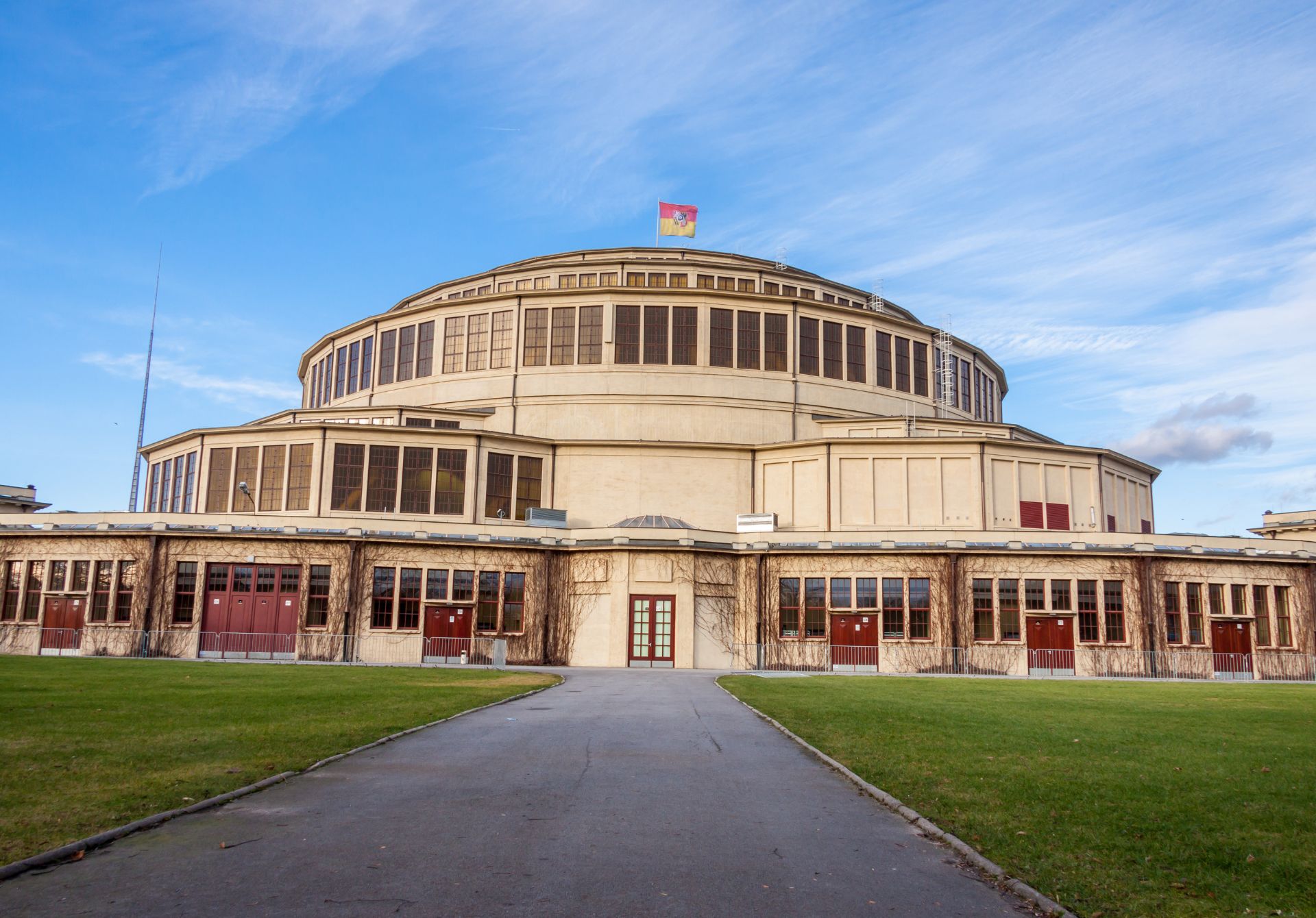Nestled in the heart of Wrocław, Poland, stands a testament to human ingenuity and architectural brilliance – the Centennial Hall, locally known as Hala Stulecia. This iconic structure, a UNESCO World Heritage site since 2006, is not just a building; it’s a journey through time, innovation, and cultural significance. Let’s dive into the fascinating world of Centennial Hall and discover why it should be at the top of your travel itinerary!
A Brief History: From Concept to Icon
Centennial Hall was born out of a vision to commemorate the 100th anniversary of the Battle of Leipzig in 1813. Designed by the renowned German architect Max Berg, the hall was constructed between 1911 and 1913. At the time of its completion, it boasted the largest reinforced concrete dome in the world, spanning an impressive 65 meters in diameter.
- Commissioned by: The city of Breslau (now Wrocław)
- Architect: Max Berg
- Construction period: 1911-1913
- Original purpose: Exhibition hall and commemorative monument
Architectural Marvel: Breaking Boundaries
What sets Centennial Hall apart is its groundbreaking design and construction techniques. The use of reinforced concrete was revolutionary for its time, allowing for a spacious, column-free interior that could accommodate up to 10,000 people. The dome’s unique ribbed structure not only provides stability but also creates a visually stunning interior that continues to awe visitors to this day.
- Dome diameter: 65 meters
- Maximum height: 42 meters
- Seating capacity: Up to 10,000 people
- Style: Early Modernist
A Cultural Hub: From Past to Present
Over the years, Centennial Hall has worn many hats. From hosting exhibitions and concerts to serving as a venue for political gatherings, the hall has been at the center of Wrocław’s cultural and social life for over a century. Today, it continues to be a vibrant space for various events, including:
- International conferences and symposiums
- Music concerts and festivals
- Trade fairs and exhibitions
- Sporting events
Fun fact: In 1948, Pablo Picasso attended the World Congress of Intellectuals for Peace held at Centennial Hall, leaving his mark on this iconic venue!
The Multimedia Fountain: A Modern Touch
In 2009, the area surrounding Centennial Hall received a spectacular addition – the Multimedia Fountain. This state-of-the-art water feature spans over 1 hectare and offers a mesmerizing display of water, light, and sound. During the summer months, visitors can enjoy regular shows that transform the fountain into a magical spectacle.
- 300 water jets
- 800 lights
- Shows run from May to October
- Perfect for evening entertainment
Visitor Experience: What to Expect
When visiting Centennial Hall, you’re in for a treat. The site offers guided tours that delve into the building’s history, architecture, and cultural significance. For the best experience, consider the following tips:
- Book a guided tour in advance for in-depth insights
- Visit during daylight hours to appreciate the exterior architecture
- Check the event calendar – you might catch a concert or exhibition
- Don’t miss the Multimedia Fountain show in the evening
- Explore the surrounding Szczytnicki Park for a relaxing stroll
Practical Information for Tourists
To make the most of your visit to Centennial Hall, here’s some essential information:
- Location: Wystawowa 1, 51-618 Wrocław, Poland
- Opening hours: Generally 10:00 AM to 6:00 PM (may vary based on events)
- Admission: Varies depending on the type of visit or event
- Accessibility: The venue is wheelchair accessible
- Nearby attractions: Japanese Garden, Wrocław Zoo, Szczytnicki Park
Why Centennial Hall Should Be on Your Bucket List
Centennial Hall is more than just a building; it’s a journey through time, art, and human achievement. Here’s why it deserves a spot on your travel itinerary:
- Architectural significance: A pioneering example of modern architecture
- Historical value: Over a century of rich history and cultural importance
- UNESCO World Heritage status: Recognized for its outstanding universal value
- Versatile experiences: From quiet admiration to lively events
- Photogenic beauty: Countless opportunities for stunning photos
Conclusion: A Timeless Wonder
Centennial Hall stands as a bridge between past and present, innovation and tradition. Its enduring appeal lies not just in its impressive architecture but in its ability to remain relevant and vibrant over a century after its construction. Whether you’re an architecture enthusiast, a history buff, or simply a curious traveler, Centennial Hall offers a unique and unforgettable experience. As you walk through its grand spaces, you’re not just visiting a building – you’re stepping into a living piece of history that continues to shape the cultural landscape of Wrocław and beyond. Don’t miss the chance to witness this architectural marvel and create your own memories in one of Poland’s most iconic landmarks!

